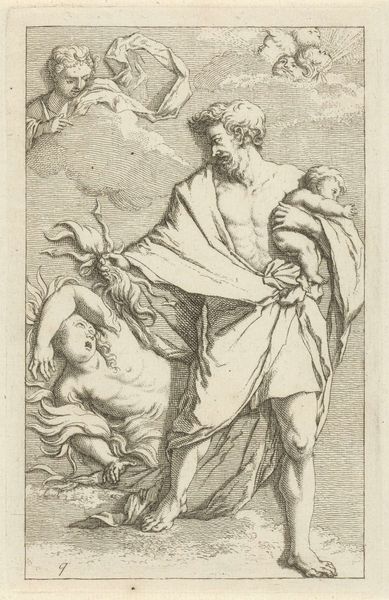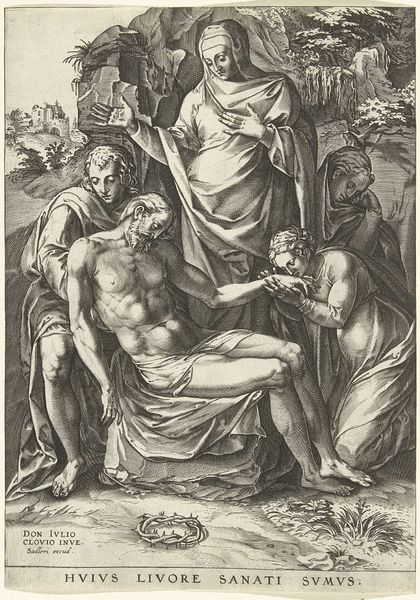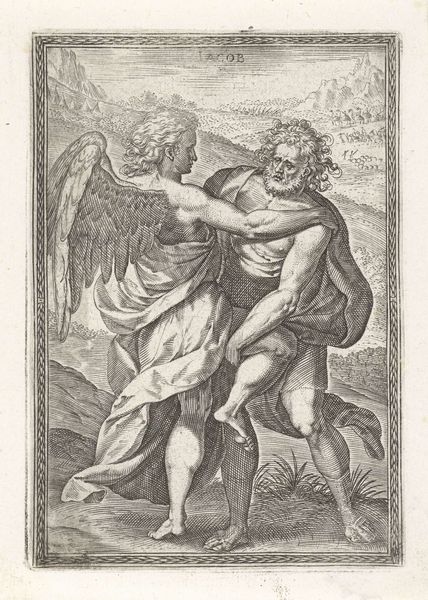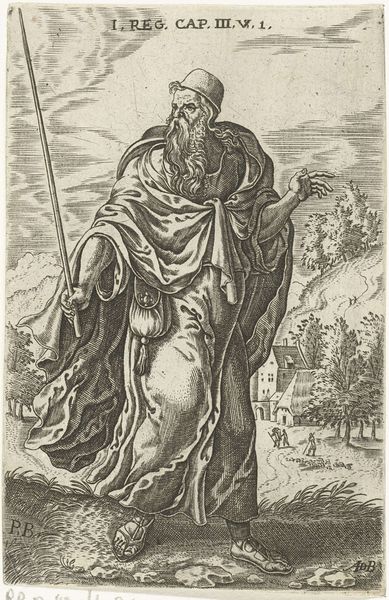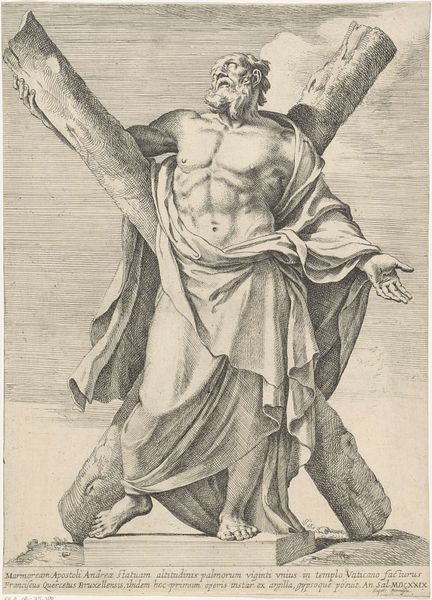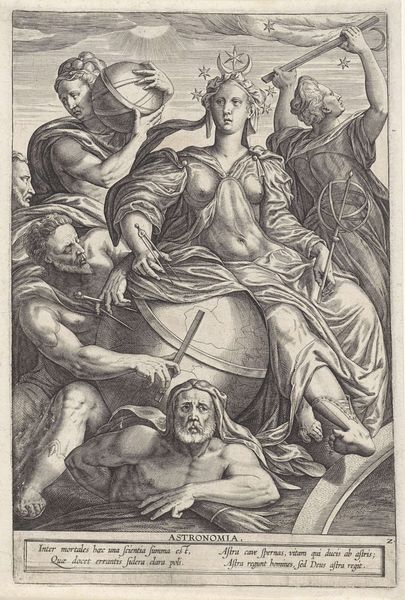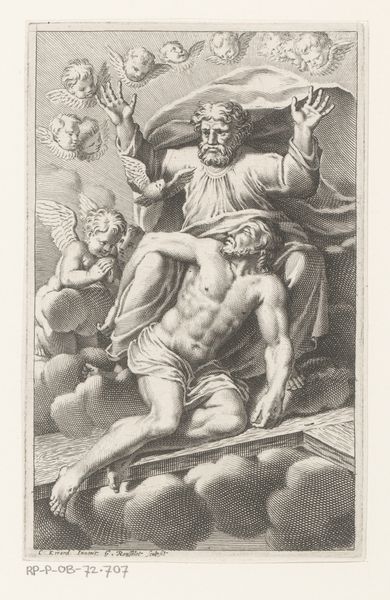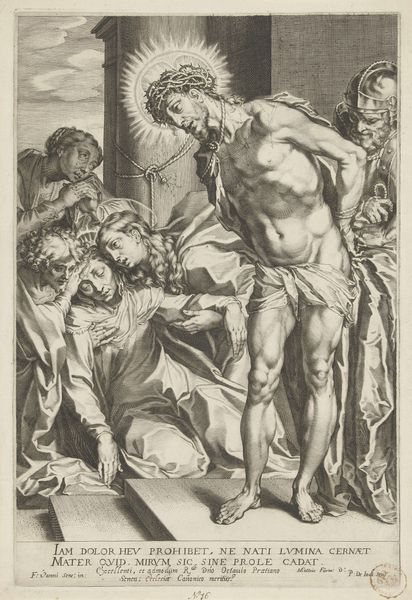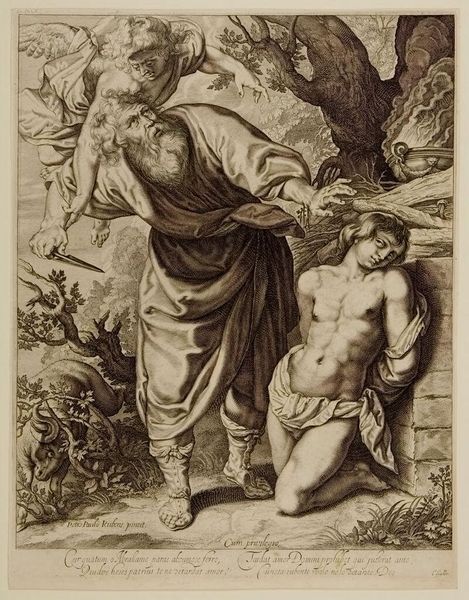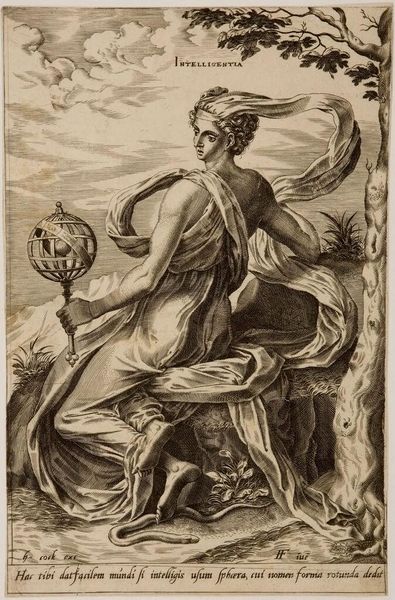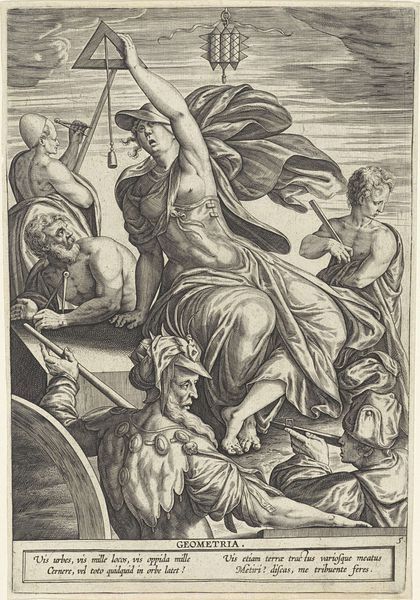
print, engraving
#
portrait
#
baroque
# print
#
figuration
#
portrait drawing
#
history-painting
#
engraving
Dimensions: height 150 mm, width 90 mm
Copyright: Rijks Museum: Open Domain
Curator: Standing before us is a 1594 print entitled "Zacharias," made by Pieter Perret. My initial reaction is that it seems filled with dynamic movement; it practically bursts off the paper, even despite the limited palette. Editor: I'm immediately struck by the raw, almost theatrical intensity of this Baroque engraving. Given the title and imagery, doesn't it point to broader themes surrounding faith, doubt, and divine intervention during a period rife with religious and political upheaval? Curator: Precisely. Observe how Perret orchestrates the composition around two central figures: Zacharias on the right, and the angel, positioned on the left, bathed in otherworldly light with those mysterious horse riders in the background. His command of line work, rendering muscle and drapery, is astonishing. Note how Zacharias throws out his right hand and simultaneously grasps his chest—he's clearly startled! Editor: And the socio-political context is just as compelling as the formal elements. Remember, prints like these were critical in disseminating visual narratives across Europe. What statement do you think Perret aimed to make through his interpretation of this Biblical moment to the contemporary social landscape? Was this a rallying call? Or merely decorative art that reproduced religious ideals in a highly stylized way? Curator: These types of images surely resonated with audiences due to the dynamic diagonals. I would contend the angel serves as a powerful vertical anchor to the dynamism on view, further emphasizing that everything below is temporary, even insignificant, by comparison to the spiritual dimension above. It invites a focus on what’s physically knowable vs. abstract or transcendent truths. Editor: But let's not overlook the engraving's inherent whiteness within 16th-century European artistic traditions. How does this representation reinforce the racial and religious hegemony? Is there some possibility of using today’s understanding of power and representational frameworks to challenge the normative depictions and consider perspectives from historically marginalized communities? Curator: Those questions introduce valid points—thank you! While appreciating how it visually communicates the spiritual dimensions described, acknowledging the historical and ideological context from a new point of view offers expanded and fresh ways to engage with this type of image! Editor: Agreed! Considering it all together, there’s still much to be investigated about Zacharias's intersectional power and lasting cultural resonance.
Comments
No comments
Be the first to comment and join the conversation on the ultimate creative platform.
